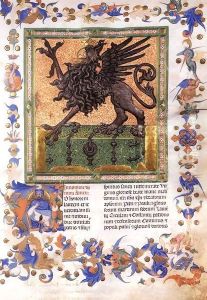Matteo Di Ser Cambio Paintings
Matteo di Ser Cambio, often known simply as Matteo da Gualdo, was an Italian painter from Gualdo Tadino in the region of Umbria. His exact birth date is not known, but he is generally believed to have been born around 1230. Not much is known about his early life or training, but he was active as an artist in the latter half of the 13th century and the early part of the 14th century.
Matteo's works are representative of the Italo-Byzantine style, which combined the formal, hieratic aspects of Byzantine art with an emerging interest in naturalism and the depiction of three-dimensional space that characterized early Italian Renaissance art. His paintings include religious subjects, often characterized by gold backgrounds and the use of vivid colors, which was typical of the period.
One of his most noted works is a fresco in the Church of San Francesco in Gualdo Tadino. Unfortunately, due to the lack of extensive records, many other works that could have been attributed to him have either been lost or remain unidentified. Matteo di Ser Cambio's career reflects the transitional nature of art during his lifetime, bridging the gap between the Medieval and Renaissance periods.
Matteo's influence was likely limited to local commissions, and he might have been part of a family workshop, which was common at the time. The socio-economic conditions of Italy during the 13th and early 14th centuries allowed for the flourishing of regional artistic centers, and Matteo's work is an example of the contributions these smaller centers made to the overall development of Italian art.
He died in 1302, and his legacy is most prominently preserved in the frescoes and painted works that remain in Umbria. While he may not be as widely recognized as some of his contemporaries like Cimabue or Duccio, Matteo di Ser Cambio is a significant figure for understanding the regional diversity of art in Italy during the late Medieval period.
